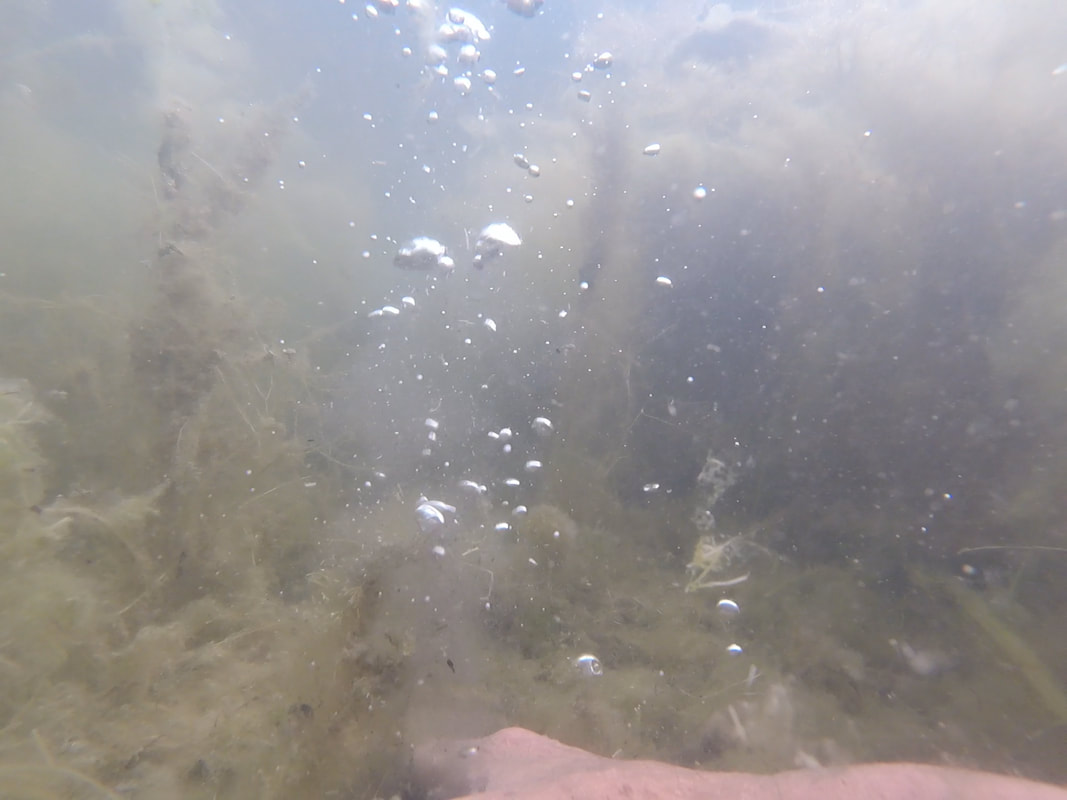When organic material, such as leaf litter, breaks down in water, the muck that accumulates breaks down slowly and can easily generate methane if the water doesn't have enough oxygen.
1. Organics - things like leaf litter that break down over time - tend to stack up at the bottom of watersheds. Basic gravity accounts for this. But while soil under fields is typically aerobic, silt and sludge that accumulates in nutrient rich water is frequently anoxic or even anaerobic, and results in methane gas production instead of carbon dioxide generation for much of each year as lakes and waterways move through the nutrient cycling process. Methane is 21 times more impactful, after time-in-atmosphere correction, than CO2. 2. Rich farm ground may include as much as 7% organics, while on the other hand, silt and sludge that accumulates on the bottom of waterways is frequently ten times that amount. Photodegradation contributes to aerobic nutrient cycling in terrestrial settings, but far less so in water. 3. Conventional agricultural practices contribute to this trend. Since 1972, there has been a five fold increase in nutrient impaired water in the United States. Today’s water is far more susceptible to massive algae blooms than ever before, at least in recorded history. Bottom line…water is a focal point for carbon accumulation. Purposeful oxygenation of benthic zones represents a means by which to prevent methane generation. But that’s only the beginning. By maintaining aerobic status from top to bottom in eutrophic water, nature’s wetland effect can be fully leveraged. Carbon and associated nutrients can be cycled into appropriate life forms. The result is incredible productivity. Today’s Harmful Algae Bloom vulnerable water can be transitioned into clear, healthy, biodiverse rich water. This is water that exemplifies the quality water that humans have vectored with since time immemorial. Today with Water Resource Recovery as an emerging strategy, we can transition water to health, and provide a beneficial and cost-effective set of tools with which to improve quality of life. Key word…Stewardship.
1 Comment
6/13/2024 04:26:46 am
This blog consistently delivers high-quality content. I always look forward to new posts.
Reply
Leave a Reply. |
AuthorWrite something about yourself. No need to be fancy, just an overview. Archives
August 2023
Categories
All
|

 RSS Feed
RSS Feed